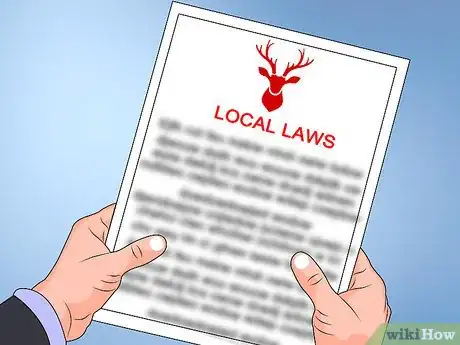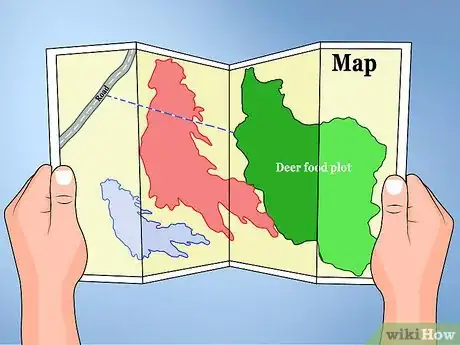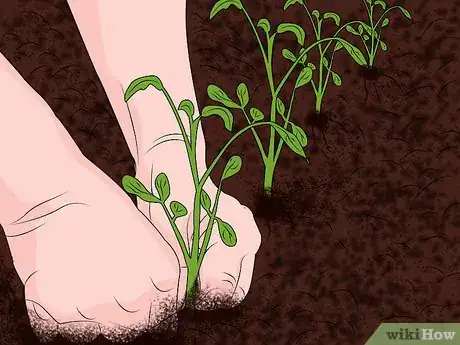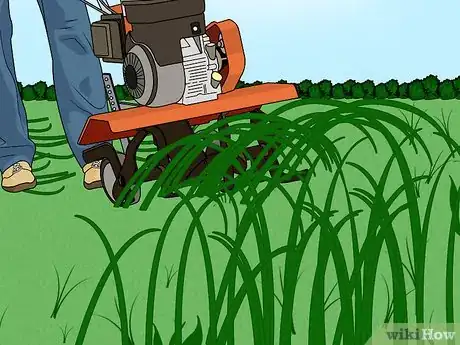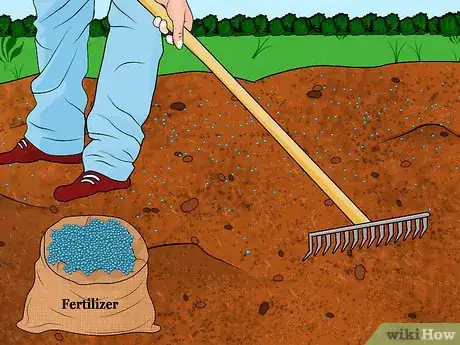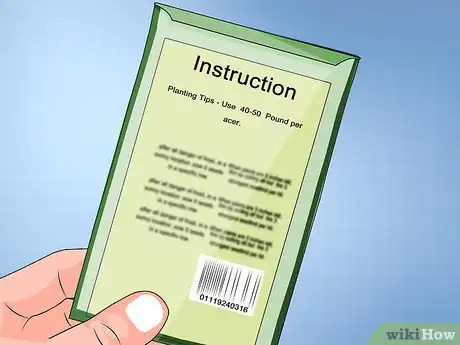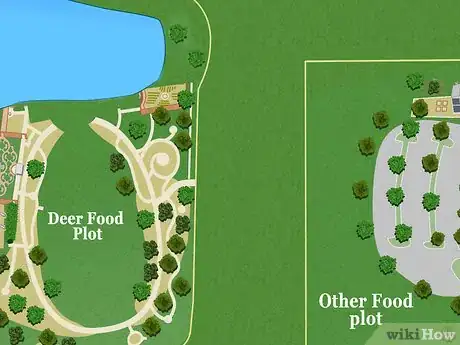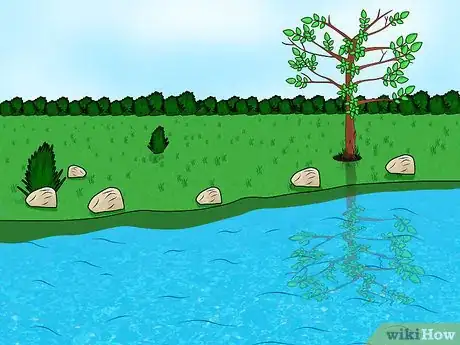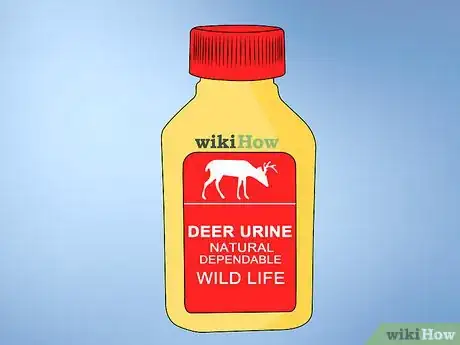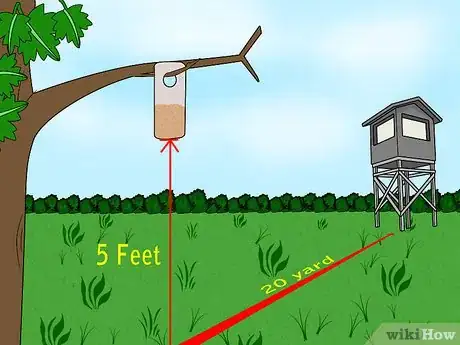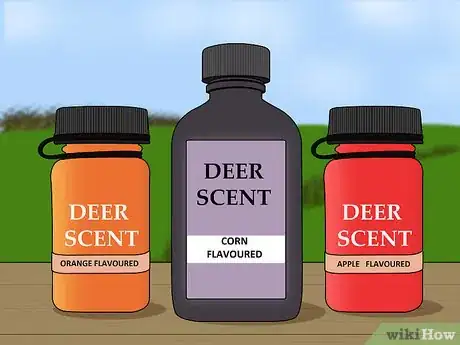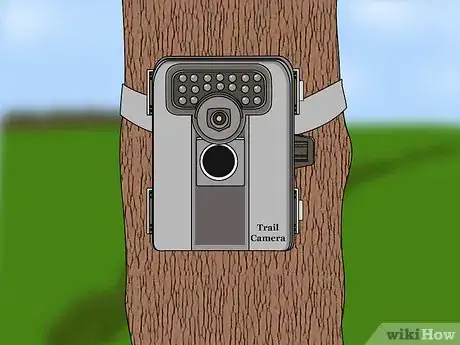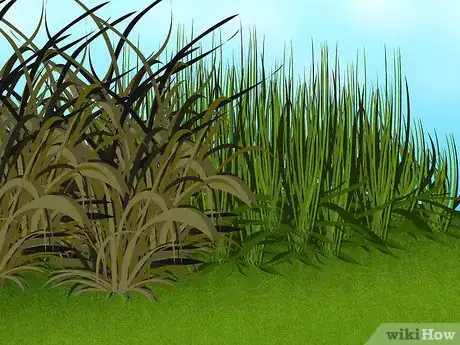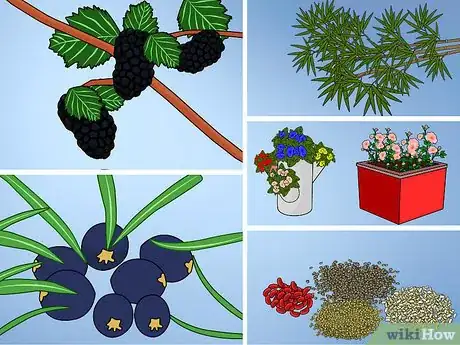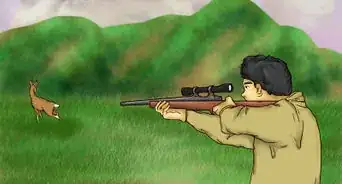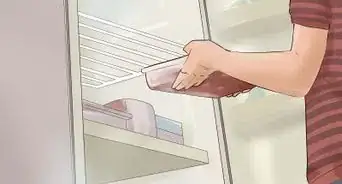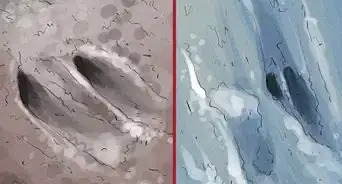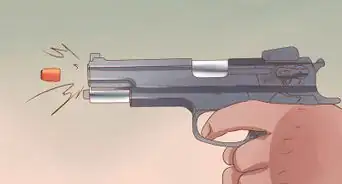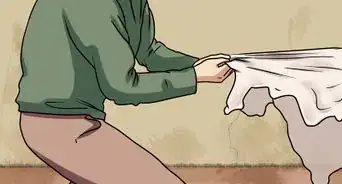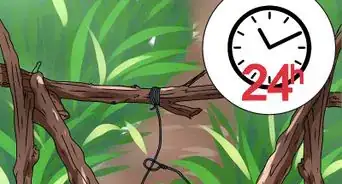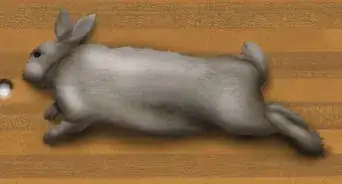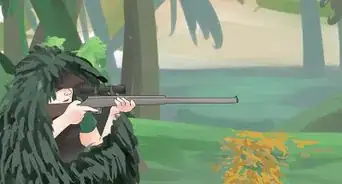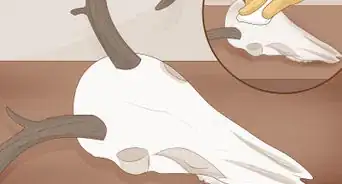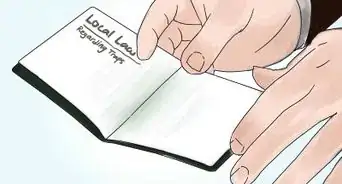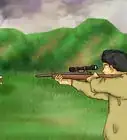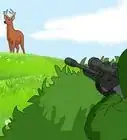wikiHow is a “wiki,” similar to Wikipedia, which means that many of our articles are co-written by multiple authors. To create this article, 17 people, some anonymous, worked to edit and improve it over time.
wikiHow marks an article as reader-approved once it receives enough positive feedback. In this case, 93% of readers who voted found the article helpful, earning it our reader-approved status.
This article has been viewed 208,424 times.
Learn more...
Whether you are trying to draw deer to your property to hunt them or just to look at them, there are many different ways you can attract deer. Deer are drawn to certain scents, foods, and plants. Check local laws and regulations before you try to bait deer.
Steps
Drawing Deer with a Food Plot
-
1Check local laws before establishing a feeding area. In many states, feeding deer at certain times of the year is illegal and is discouraged. Deer that are fed may become nuisances to people.
-
2Make sure that you locate your food plot away from roadways. Deer might not come close if there is a lot of traffic nearby, and luring deer into the path of traffic can have serious consequences.Advertisement
-
3Plant a food plot. A food plot is an area of land that you clear and seed with plants that deer like to eat. You could also plant several food plots throughout your property.
- Deer are drawn to crops that are high in protein, such as kale, turnips, soybeans, peas, and alfalfa. A mix of plants that include clover and grasses, like wheat, oats and rye, will attract deer. Experts suggest that you plant 60 percent cool-season perennials like clovers, 20 percent cool-season annuals like turnip and kale, and 20 percent warm-season annuals, like corn, soybeans and alfalfa.[1]
- Deer also like nuts such as chestnuts and acorns. While it may be a long wait for results, planting mast trees such as these will eventually offer deer some of their favorite foods when the trees begin to bear nuts. Other trees that produce fruit deer like are persimmons, pears, and apples. Determine which trees will succeed in your location.
-
4Choose food for your plot that is not already plentiful in your area. Thus, if there are cornfields nearby, planting corn might not be as productive.[2]
- Some hunting stores sell seed mixes that are created specifically for deer food plots.
- Local seed stores also can sell bulk seed to allow you to create your own blend, with winter peas, fescue, vetch, and sun hemp.
-
5Choose a location that is fairly well drained and not subject to erosion or flooding for your food plot. Planting on steep terrain or in a flood plain isn't a good idea.
-
6Clear away brush and trees from the plot. Depending on the plot size and the density of the existing vegetation, you may find you need a tractor with suitable implements to clear and prepare the ground for planting.
-
7Test the soil for ph and nutrients, matching these to the crop you are going to plant. As a general rule, a ph between 6.0 and 7.5 will support plant growth, beyond this range and you may need to add amendments to modify the soil chemistry.
-
8Spread fertilizer in the area to spur plant growth. You will need to try to incorporate the fertilizer into the top 4 inches of soil so it doesn't run off during rain.
-
9Spread the seeds according to package instructions. Usually, grains like oats and rye are applied at about 40-50 pounds per acre, and once the seed is spread you will want to rake or disc it in to improve germination.
-
10Keep the food plot away from other plants or gardens if you don't want deer to eat those too. Place the food plot away from areas that could flood. Food plots for deer can range from 1,000 square feet to several acres.
-
11Provide the deer with a water source. Deer will be drawn to water. This could come in the form of a watering hole or a tank.[3]
- Make sure you maintain trees on either side of rivers or other waterways to stop erosion and reduce the risk of polluting these streams.
- Deer also like the cover from the trees.
- Deer might be drawn to water in a plastic kiddie poll or a pedestal birdbath too.[4]
Using Deer Lure
-
1Choose deer urine as a lure. This can be one of the most effective scents for drawing deer to an area. Hunters often use deer lure, but they can also be used to attract the animals for the simple pleasure of viewing them.
- Put the deer urine lure around the area of your property where you want to draw deer. Apply doe scent on grass or trees if you want to lure bucks.
- Deer will be most drawn to the scent about 10 weeks before the height of the local deer's breeding season.
-
2Hang scent wicks. If you are in a hunting stand, hang scent wicks around your tree stand. The scent wicks are often saturated with buck urine.
- Put the scent wicks about 20 yards in front of the stand and make sure they are about four or five feet off the ground so the wind will disperse the scent.
- Minimize human scent on the lure. Deer will be less attracted to the lure if they also smell human scent. So be careful when handling the lure. You can find deer scent in sporting or hunting goods stores.
-
3Try using sweet apples. Some deer may love the smell of sweet apples, so you could draw them with the fruit or its scent. This will be on the condition that apples are part of your local deer populations food supply.
- Plant an apple or crab apple tree around the edge of your yard. Deer will like the cover, the tender leaves, and the fruit produced by these trees.
- You could also put apples in a tub or bucket in addition to grain or deer feed and see if that will draw the deer. You could also fill barrels or buckets with corn. Try using 5-gallon pails, and put them throughout your property.
-
4Use a salt block. Deer may be drawn to salt and mineral blocks, as well as blocks made of cider and apple salt.
- Feed stores and hunting goods stores should have these for sale. Place the salt blocks at the edge of your property.
- If you have a food plot, you may want to locate the salt block there instead. Or you could put the salt block near a feeder. You could also bury the salt block in the ground, and sprinkle salt on top of it. It could take several weeks or even months for the deer to find the salt block, so be patient.
-
5Buy commercial lures. You can find many different deer scents packaged for sale at sporting goods stores. They include some creative scent combinations said to increase the chances you will attract deer.
- For example, some stores sell scented deer corn, such as orange-flavored corn.
- Products flavored with apples, such as corn, liquids and other attractants are known to draw deer, who love apple scent.[5]
-
6Use a game/trail camera to monitor your food plot. This will show you what animals are visiting your plot, and help you establish what foods the deer are feeding on, as well as what food other animals may be stealing.
Making your Yard Deer Friendly
-
1Keep pets, especially dogs away from any area you want to attract deer to. Even the scent of a dog can frighten away deer.
-
2Grow taller grass. Deer prefer tall grass. So if you want a lot of deer in your yard, you could grow your grass longer. However, they also like a mixture of plant density.
- Perhaps you could just grow the grass longer around the property's perimeter.
- Deer enjoy a mixture of cleared areas, young trees and shrubs that provide cover and aid their diets and mature hardwood forests. They like to be on the edges of forests with a lot of different plants and densities. They often forage in clearings, especially at night, but they like to hide in the daylight in thicker foliage.
-
3Remove fences that will deter deer. If you have fences around your yard, deer may not be able to move around your property.
- If removing a fence is not possible, you could create an opening within the fence for the deer to pass through.
- Reduce bright lights and sounds. These things can scare deer, and make them stay away from your property. A lot of human activity on your property also might keep deer away.
-
4Plant trees and shrubs that deer like. Deer will be drawn to certain trees and shrubs. If you plant them throughout your property, they will be a natural draw.
- Blackberry trees, elderberry, juniper, red cedar, Douglas fir, and flowering dogwood are enjoyed by deer.
- Plant flowering plants. Deer will like blooming plans and legumes. Pay attention to the edges of your property. Deer often hang out around the edges of properties especially if there is foliage that provides them cover.[6]
Community Q&A
-
QuestionIs there a time to start that might be better than other times?
 Community AnswerBreeding season. More deer will come and you might see an exiting Buck fight.
Community AnswerBreeding season. More deer will come and you might see an exiting Buck fight. -
QuestionWhat fruits do deer like most?
 Community AnswerApples and blueberries work the best. If you are hunting, put them in a tree near a nice clearing surrounded by long grass, and get a fair distance away (but somewhere you can still see the area clearly).
Community AnswerApples and blueberries work the best. If you are hunting, put them in a tree near a nice clearing surrounded by long grass, and get a fair distance away (but somewhere you can still see the area clearly).
Warnings
- Do not touch a fawn if you find it alone. Does will leave their young in a safe location as they browse and will return for the baby.⧼thumbs_response⧽
- Bucks become dangerous during the mating season and should not be approached.⧼thumbs_response⧽
- Be aware that deer carry ticks that may be infected with and transmit Lyme disease. This disease is a bacterial infection that may cause numerous ailments, including fatigue, fever, swollen lymph nodes, headaches, and joint pain.⧼thumbs_response⧽
References
- ↑ http://mylandplan.org/content/how-attract-whitetail-your-land
- ↑ http://mikesbackyardnursery.com/2013/08/how-to-attract-deer/
- ↑ http://mylandplan.org/content/how-attract-whitetail-your-land
- ↑ http://www.g5prime.com/bow-hunting-attracting-deer-to-your-property/
- ↑ http://www.wideopenspaces.com/5-deer-attractants-drive-whitetail-bucks-crazy-pics/
- ↑ http://www.realtree.com/food-plots-and-land-management/the-ultimate-deer-hunting-property
About This Article
To attract deer, plant trees and shrubs around your yard that they like to eat, such as elderberry bushes, juniper, or flowering dogwood. Additionally, let your grass grow longer around the edges of your property, since deer prefer tall grass. You can also put out buckets of sweet apples or corn, because deer love the smell and will come to feed on them. Alternatively, draw deer to your yard by putting commercial deer urine lure in the area you want deer, especially around breeding season. For tips on how to create a food plot to attract dear to your property, read on!
